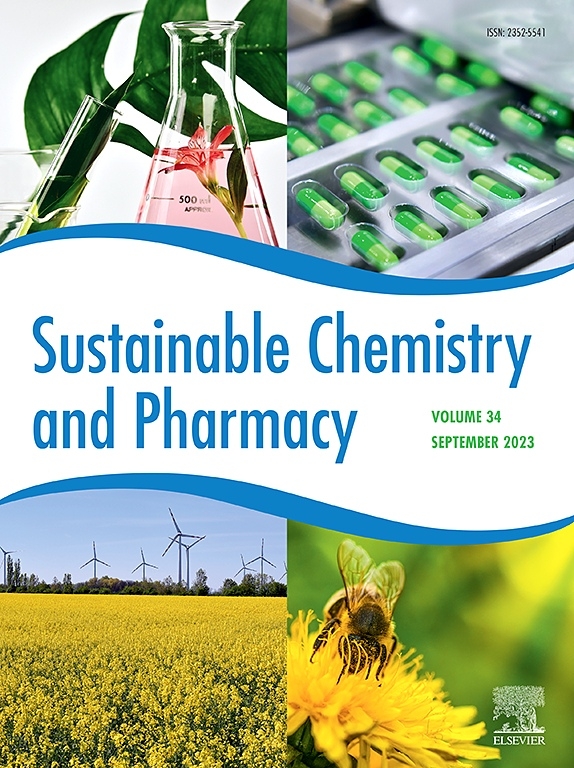Study on mechanical properties, hydration mechanism and carbon emission of phosphogypsum-based sustainable cementitious materials
IF 5.5
2区 化学
Q2 CHEMISTRY, MULTIDISCIPLINARY
引用次数: 0
Abstract
The excessive stockpiling of phosphogypsum (PG), rich in sulfates, phosphorus, fluorine, and heavy metals, threatens environmental safety if not properly handled. To address this issue, this study developed PG-based sustainable cementitious materials using PG, GBFS, NaOH, and Na2SO4. Analytical techniques such as XRD, SEM, and ICP-MS were employed to investigate its strength development mechanisms, hydration characteristics, microstructure, and leaching toxicity. The utilization rate of phosphogypsum is expected to reach 50 %, and the compressive strength is anticipated to exceed 40 MPa. The findings demonstrate that the optimal formulation for cementitious materials consists of 50 % PG, 47 % GBFS, 3 % NaOH and 3 % Na2SO4 (external). The compressive strengths at 3, 7, and 28 days are 2.27, 20.46, and 43.54 MPa, respectively, with a PG utilization efficiency of 50 %. An increase in PG content extends the second exothermic peak of the cementitious materials system. Concurrently, NaOH accelerates the hydration process, partially shortening the induction period and promoting the formation of hydration products such as AFt, and C–S–H, thereby enhancing the strength of the cementitious materials. In addition, the leaching concentrations of F- and PO43- in PG were 148.23 mg/L and 298.24 mg/L, respectively, which were reduced to 2.364–4.410 mg/L and 0.052–0.220 mg/L in cementitious materials, respectively, and the other pollutants were below the limits specified in the relevant standards. The use of PG-based sustainable cementitious materials significantly reduces the carbon emission index. Under the optimized proportioning, the carbon emission per unit is reduced to 46.8995 kg/m3, which is 394.1005 kg/m3 less than that of ordinary silicate cement, with obvious advantages in energy saving and emission reduction. Due to the presence of gypsum and AFt, phosphogypsum sustainable cementitious material systems have lower shrinkage compared to cement.

求助全文
约1分钟内获得全文
求助全文
来源期刊

Sustainable Chemistry and Pharmacy
Environmental Science-Pollution
CiteScore
8.20
自引率
6.70%
发文量
274
审稿时长
37 days
期刊介绍:
Sustainable Chemistry and Pharmacy publishes research that is related to chemistry, pharmacy and sustainability science in a forward oriented manner. It provides a unique forum for the publication of innovative research on the intersection and overlap of chemistry and pharmacy on the one hand and sustainability on the other hand. This includes contributions related to increasing sustainability of chemistry and pharmaceutical science and industries itself as well as their products in relation to the contribution of these to sustainability itself. As an interdisciplinary and transdisciplinary journal it addresses all sustainability related issues along the life cycle of chemical and pharmaceutical products form resource related topics until the end of life of products. This includes not only natural science based approaches and issues but also from humanities, social science and economics as far as they are dealing with sustainability related to chemistry and pharmacy. Sustainable Chemistry and Pharmacy aims at bridging between disciplines as well as developing and developed countries.
 求助内容:
求助内容: 应助结果提醒方式:
应助结果提醒方式:


